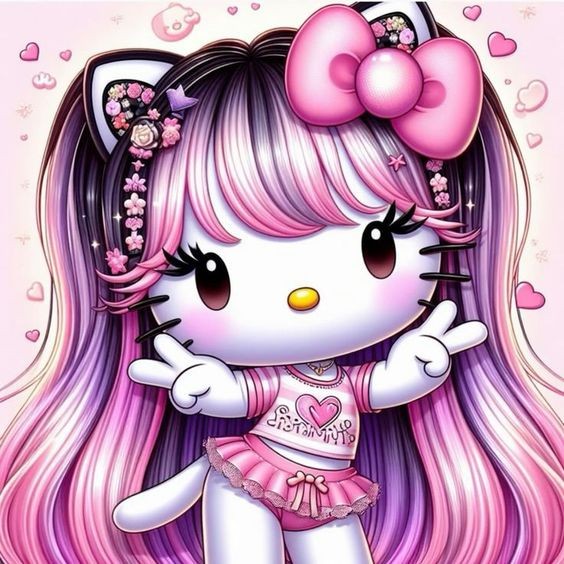The Enduring Charm of Hello Kitty: A Cultural Icon
In a world overflowing with fleeting trends, few characters have managed to carve out a lasting niche quite like Hello Kitty. With her simple yet captivating design, this adorable feline has become an emblem of pop culture, transcending age, nationality, and even the boundaries of fashion. But what is it about Hello Kitty that has captured the hearts of millions around the globe? Let’s delve into the world of this beloved character and explore her remarkable journey.
The Birth of Hello Kitty
Hello Kitty, known in Japan as "Kiki," was created by Yuko Shimizu and debuted on a small coin purse in 1974. The character was developed by Sanrio, a company that specializes in creating cute, whimsical characters. Her full name is Kitty White, and she is depicted as a white cat with a red bow. Despite her charming appearance, Hello Kitty has no mouth, which allows fans to project their own emotions onto her, adding to her universal appeal.
A Global Phenomenon
Initially targeted towards young girls in Japan, Hello Kitty's appeal quickly spread beyond her native land. By the 1980s, the character had found her way into the global market, appearing on a wide range of products from stationery to clothing, and even home goods. Her popularity surged in the United States and Europe, where she was embraced by both children and adults alike.
Hello Kitty’s reach extends far beyond traditional merchandise. She has been featured in various forms of media, including television shows, video games, and even a feature film. Additionally, Hello Kitty has collaborated with numerous brands, including high fashion houses like Givenchy and Moschino, demonstrating her versatility and wide-ranging influence.
The Philosophy Behind the Charm
What makes Hello Kitty so endearing? Part of her charm lies in her simplicity. Unlike more complex characters, Hello Kitty’s minimalistic design allows her to embody a broad range of emotions and experiences. Her lack of a mouth signifies that she can be whatever the viewer wants her to be, a blank canvas for personal connection.
Hello Kitty’s design is also a reflection of Japanese culture’s appreciation for kawaii, or cuteness. This aesthetic principle values innocence and charm, which Hello Kitty embodies perfectly. Her enduring presence in pop culture highlights how effective this approach can be in creating a character that resonates across generations.
Hello Kitty and Cultural Impact
Hello Kitty’s influence extends beyond mere merchandise; she has become a cultural icon in her own right. Her image is a symbol of joy, friendship, and kindness. The character has been used in various social campaigns and charity initiatives, further cementing her status as a positive force in the world.
In Japan, Hello Kitty is not only a beloved character but also a part of the country's cultural fabric. She has appeared in public service campaigns, served as a goodwill ambassador, and even inspired themed attractions and cafés. Her influence is so profound that she is often cited as a symbol of Japanese pop culture and its global influence.
The Future of Hello Kitty
As we move further into the 21st century, Hello Kitty shows no signs of fading from popularity. Sanrio continues to innovate, bringing the character into new and exciting realms, including virtual reality and digital platforms. Her ability to evolve while maintaining her core charm ensures that Hello Kitty will remain a beloved figure for years to come.
In conclusion, Hello Kitty's enduring appeal is a testament to her universal charm and the power of simplicity in design. From her humble beginnings as a coin purse decoration to her status as a global icon, Hello Kitty has captured the hearts of people around the world. As she continues to evolve and inspire, her legacy as a cultural phenomenon is firmly secured, making her one of the most iconic and beloved characters of all time.






